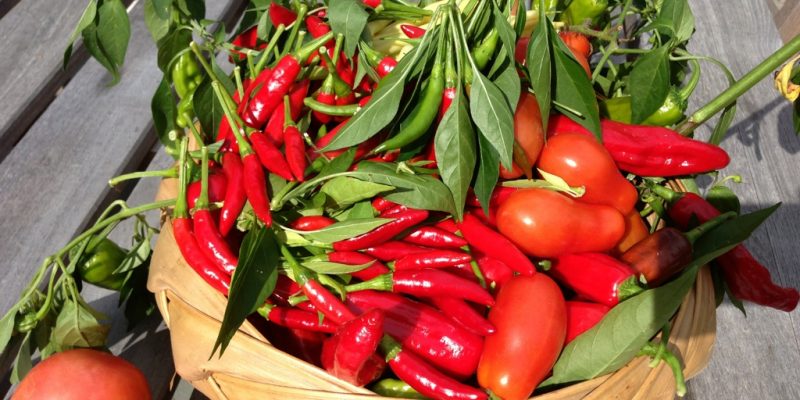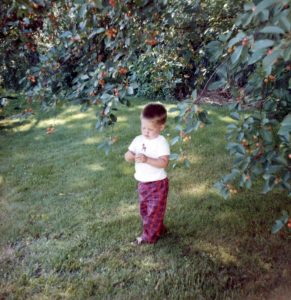

Jeff Zadroga, the Gardener in Gardiner
The year is 1994. I’m singing on a cruise ship in Hawaii. My friends have discovered that camping in Gardiner is pretty cool and they love the views of the Gunks. They poke around town looking at property and the next thing you know, they call me and we buy a house off Marabac – 2 acres, views of the Gunks, overgrown, mouse droppings throughout, a real fixer upper! Let the gardening (and fixer uppering) in Gardiner begin…
That first year on a break from the ship in July we started our first garden – about 10’x10’ – tomatoes, squash and whatever else we could squeeze into that space. And, wait for it – we planted mint which is still going strong all these 28 years later! Later in this article I’ll share a few “do’s and don’ts”.
There may be folks reading this article who are much smarter gardeners than I will ever be. My advice comes from my experience of just having fun with a small garden over the past 28 years.
We now have 3 sections of raised beds and an area for blueberries – about 25’x25’. We are completely organic – no chemicals! Our favorite things to plant are the traditional garden vegetables – tomatoes, fresh in the summer and then lots of great sauce in the winter; zucchini for grilling, sautéing, relish; green and yellow beans for steaming, yummy summer salads, spicy canned ‘dilly’ beans; peppers – hot and sweet for grilling, salsa, salads, stuffing; basil – fresh for that incredible tomato salad, pesto and dried for all-year-round flavor; lots of kale for salads, roasting, sauteing; asparagus which is perennial and oh so good roasted or grilled; garlic which is planted in the fall similar to other fall bulbs; and sometimes brussels sprouts, cabbage or whatever seedlings that look interesting at the garden center. I suggest starting things like squash, beans, peas, melons from seed and tomatoes, peppers, basil, kale from seedlings.

Jeff under his grandmother’s sour cherry tree in Pennsylvania
If you’re new to backyard gardening, start small and try not to do too much the first year. Clear a space, remove as much of the grass and as many weeds as you can and construct raised beds. This is so much easier and more efficient than digging into our Gardiner soil where you may find some clay and lots of rocks. Fill the raised beds with good loam, manure, and compost. Depending on your interest and available time to manage the weeds, I suggest mounding the soil in rows as appropriate for whatever you’re going to plant and then using black paper to cover them. Cut holes in the paper where the plants will go, add a little fish emulsion and compost and plant the seed or seedlings according to the planting instructions. If you want to make the garden look a little more attractive, find some clean straw (not hay) and layer that around the garden.
The application of straw will also help with that pesky early tomato blight (leaves turn brown at the bottom of the plant and the blight works its way up the plant) we seem to have in our area. I’ve read about remedies which involve removing the soil, burning the soil and other labor-intensive solutions. If you do encounter the blight here are a few options:
- Look for “early blight” resistant tomato varieties or ask the garden center what they have in stock which might be resistant
Rotate “nightshade” (Solanaceae family) vegetables to a separate area of the garden from where you’ve planted tomatoes, peppers, potatoes or eggplant for the past two years - Use stakes or cages to keep foliage off the ground and growing vertically
- Mulch with clean straw
- Use a soaker hose to avoid the blight spores splashing up on the plants
- Apply a fungicide when the fruit sets and then every 7-14 days – Bonide makes an organic copper fungicide which we have used
- In the fall, remove all the old vegetation from these plants and dispose of it (I avoid putting this into my compost)
Do’s
- Plant the things you want to eat
- Experiment with something new – you may be surprised
- Use good soil – compost, manure – and layer it in mounds to create rows
- Plant a good “cover” crop (green manure) in the fall or spring – this will help aerate the soil and add nutrients. We have used the Garden Cover Crop Seed Mix from online retailer True Leaf Market
- Rotate varieties each year
- Have fun!
Don’ts
- Till the soil – for the most part you are uncovering buried weed seeds desperate to be exposed to the light and grow and grow and grow
- Plant the aforementioned mint in an open garden
- Waste your time on corn – by August there’s a plethora of inexpensive local corn which is wonderful – in my experience you just can’t grow enough in a backyard garden to pollinate and mature properly
- Plant a lot of zucchini and squash – when I worked in summer stock, by the time August rolled around we had squash for breakfast, lunch and dinner donated by good intentioned theatre patrons!
Please provide your feedback, ask questions, share your good and bad gardening experiences and advice. Let’s keep the conversation going. gardinergardener@gmail.com
